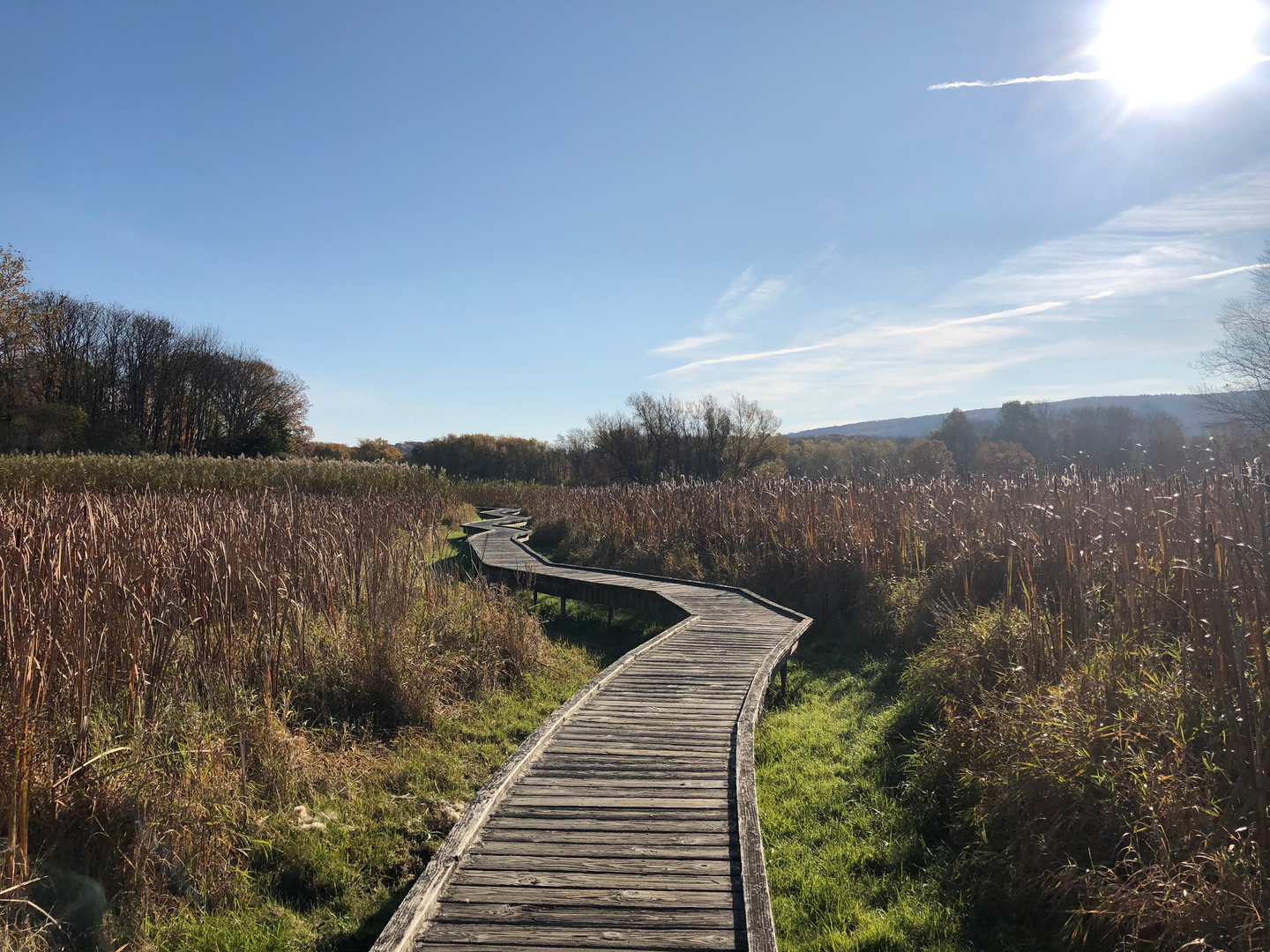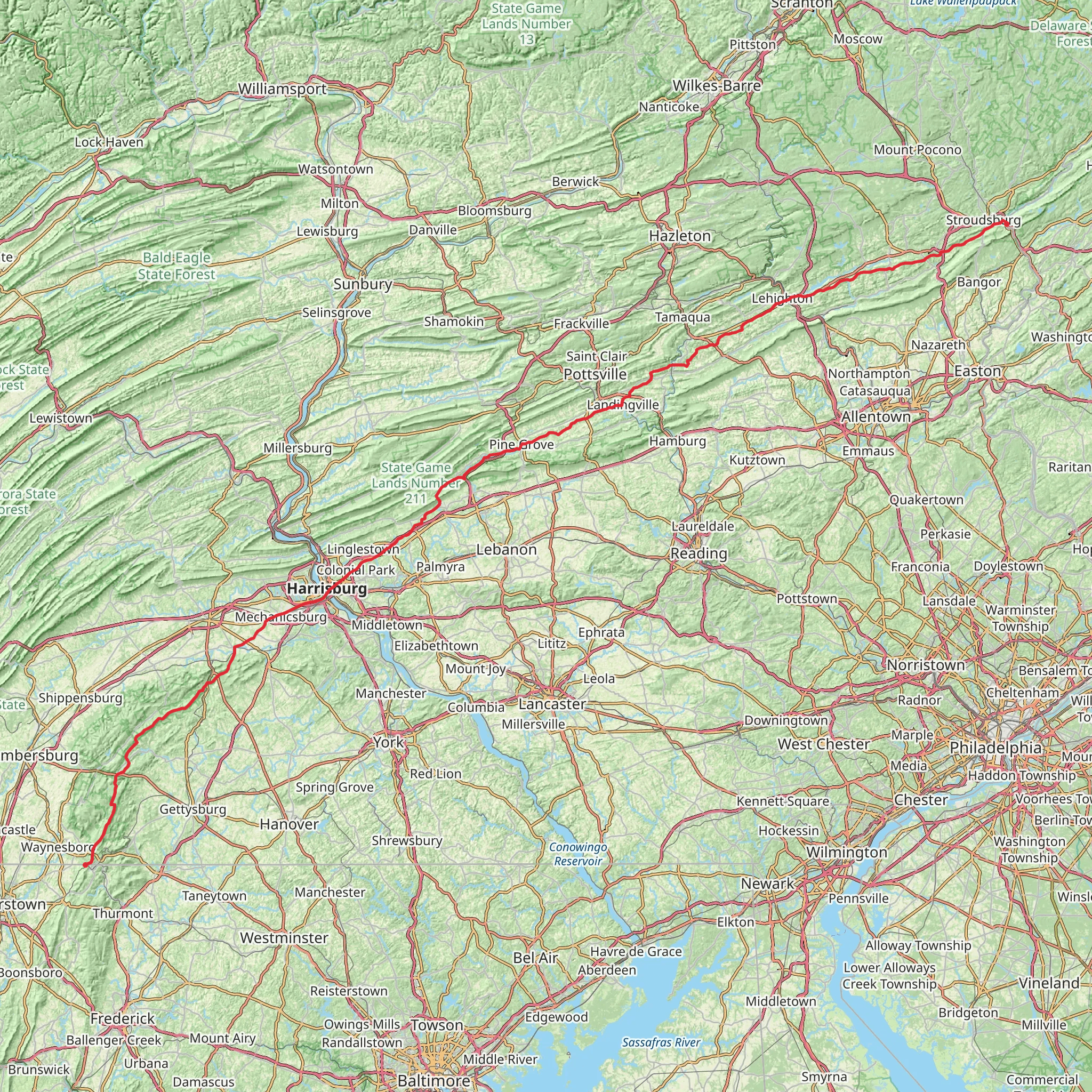Download
Preview
Add to list
More
293.6 km
~14 days
2895 m
Multi-Day
“Trek through Pennsylvania's Appalachian Trail for a historic, rocky, and wildlife-rich hiking adventure.”
Spanning approximately 183 miles (294 kilometers) and with an elevation gain of around 9,186 feet (2800 meters), the Appalachian Trail section through Pennsylvania offers a unique blend of challenging rocky paths, serene forest walks, and historical significance. This point-to-point trail begins near the Mason-Dixon line in Washington County, Maryland, and continues northward to the Delaware Water Gap at the Pennsylvania-New Jersey border.
Getting to the Trailhead
To reach the southern trailhead, hikers can drive to Pen Mar Park, which is close to the border of Maryland and Pennsylvania. For those relying on public transportation, options may be limited, but regional bus services can get you close to the area, and from there, a taxi or ride-sharing service can be used to reach the park.
Terrain and Trail Conditions
The Pennsylvania section of the Appalachian Trail is often referred to as "where boots go to die" due to its rocky terrain, especially in the northern half. Hikers should be prepared for uneven ground and wear sturdy, well-fitting boots to prevent injury. The southern portion of the trail is less rocky and offers a gentler introduction to the hike.
Landmarks and Historical Significance
As you traverse the trail, you'll encounter several notable landmarks. The halfway point of the entire Appalachian Trail is a significant milestone located near Pine Grove Furnace State Park, which is roughly 70 miles (113 kilometers) into the Pennsylvania section. Here, hikers often celebrate by partaking in the Half-Gallon Challenge, attempting to eat a half-gallon of ice cream at the park's general store.
Further north, the trail passes through historic Gettysburg, a short detour from the trail, where the famous Civil War battle took place. The region is steeped in history, and the trail itself follows paths that were once used by soldiers and settlers.
Flora and Fauna
The trail meanders through a variety of forests, including oak, maple, and pine. Wildlife is abundant, with the possibility of encountering deer, black bears, and a diverse array of bird species. Hikers should be aware of the presence of bears and practice proper food storage and disposal techniques.
Navigation and Preparation
Hikers can use the HiiKER app to navigate the trail, ensuring they stay on the correct path and have access to up-to-date information about water sources, shelters, and campsites. It's essential to carry a map and compass as backups and know how to use them.
Weather and Best Time to Hike
Pennsylvania experiences all four seasons, with the potential for hot, humid summers and cold, snowy winters. The best time to hike this section is from late spring to early fall when the weather is milder. Always check the forecast before setting out and be prepared for sudden weather changes.
Leave No Trace
As with any trail, it's crucial to follow Leave No Trace principles. This means packing out all trash, being respectful of wildlife, and minimizing the impact on the environment by staying on the designated trail.
By preparing adequately, respecting the natural and historical significance of the region, and taking the necessary precautions, hikers can enjoy a rewarding experience on the Pennsylvania section of the Appalachian Trail.
What to expect?
Activity types
Comments and Reviews
User comments, reviews and discussions about the Appalachian Trail - Pennsylvania, Maryland.
5.0
average rating out of 5
8 rating(s)

